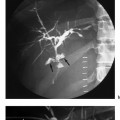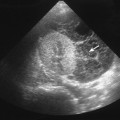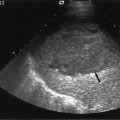Small Bowel and Multivisceral Transplantation
Introduction
Small bowel transplantation is indicated for intestinal failure resulting from surgical loss of most of the small bowel (resulting in short gut syndrome) or absence of functional bowel (e.g., motility disorders). Experimental intestinal transplantation was first performed by Lillehei et al. 1959 in dogs.1 Starzl and Kaupp later reported multivisceral transplantation in dogs.2 The first report of a clinically successful multivisceral transplantation was in 1987 by Starzl et al.3 The limited success was due to unrelenting rejection of the allografts, related mainly to the absence of specific and more potent immunosuppressive agents. With rapid advances in transplant immunology and the introduction of newer immunosuppressants, physicians are now better equipped to prevent and treat allograft rejection. Moreover, the techniques of organ allograft procurement, preservation, and transplantation have been standardized over the course of the last ten years. This has led to better graft outcomes and has rapidly transformed the field of small bowel and multi-visceral transplantation for patients with intestinal and/or liver failure.
Indications
Isolated Small Bowel Transplantation
The indications for transplantation of small bowel alone may be divided into the surgical and the nonsurgical. Surgical causes of small bowel loss are:
- — Acute loss of intestinal function (surgical resection) due to necrotizing enterocolitis, volvulus, or mesenteric thrombosis
- — Chronic loss of intestinal function due to Crohn disease or radiation enteritis
- — Absence of vascular access in the presence of short gut syndrome
Nonsurgical causes are:
- — Motility disorders: intestinal pseudo-obstruction, Hirschsprung disease
- — Absorptive defects: microvillous inclusion disease, polyposis, desmoid tumors
Liver-Small Bowel Transplantation
The main indication for combined liver and small bowel transplant is end-stage liver disease due to prolonged hyperalimentation for short gut syndrome. The liver is transplanted with the small bowel especially if there is biopsy-proven cirrhosis, portal hypertension, and evidence of synthetic and biochemical dysfunction.
Multivisceral Transplantation
Multivisceral transplantation may include4,5 stomach, duodenum, pancreas, liver, and small bowel with or without colon. The main indications are pseudo-obstruction/aganglionosis syndrome with hepatic failure, diffuse splanchnic venous thrombosis, and hepatic failure.
Patient Selection
Due to the complex nature of problems associated with patients who are candidates for small bowel and multivisceral transplantation, the work-up is best done at a transplant center where there is expertise in short gut problems and small bowel transplantation. Not all patients referred for small bowel transplantation necessarily need one. One of the most important aspects when evaluating these patients is to ensure that all attempts have been made to maximize the use of the remaining gut. This requires a dedicated team of gastroenterologists, nutritionists, social workers, and surgeons to evaluate the patient and, very often, make changes in the feeding formula and the duration of feeding. This has resulted in some patients with short gut syndrome being weaned off hyperalimentation successfully.
Once the need for small bowel transplantation is established, however, the need for other organs (e.g., liver) to be transplanted at the same time is assessed. The patient is evaluated by gastroenterologists, hepatologists, social workers, nutritionists, transplant coordinator, and a transplant surgeon. A complete work-up consists of sending blood for typing, biochemical analysis, liver panel tests, protein S and C deficiency testing, and serological testing for hepatitis and human immunodeficiency virus (HIV). Radiological studies are performed to confirm the absence of functional small bowel and the patency of the portal venous system. The diagnosis of motility disorders is established by motility studies and bowel biopsy. The social worker looks into the family structure and support system.
Technical Aspects
Donor Operation
Careful donor selection is extremely important. The donor should be of the same blood type as the recipient and should not weigh more than 20% more than the recipient. It is important that the cold ischemic time is kept as short as possible. Occasionally, small bowel grafts with up to 17 or 18 hours of cold ischemia time have been used with good results. Donor hypernatremia, dependency on vasopressors, and the presence of infection are contraindications to procurement.
Donor surgery consists of mobilizing the small bowel and liver and isolating the infrarenal aorta. A mixture of amphotericin B, gentamicin, and polymyxin is administered to the small bowel via nasogastric tube to decontaminate the gut. The donor is heparinized, the aorta cross-clamped, and the organs perfused with cold University of Wisconsin solution administered via a catheter in the infrarenal aorta. The small bowel is procured en bloc with the liver. If the recipient needs isolated small bowel transplantation, the two organs are separated on the back table.
Recipient Operation
Figure 14.1 shows isolated small bowel; liver and small bowel, and multivisceral grafts. The recipient operation consists of an exploratory laparotomy and the taking down of adhesions, as some of these patients have had several explorations. In isolated small bowel transplantation the arterial inflow to the graft is most commonly provided by anastomosing the donor superior mesenteric artery to the infrarenal aorta. Venous outflow is provided by anastomosing the superior mesenteric vein of the donor to the side of the recipient portal vein or into the inferior vena cava. In liver and small bowel transplantation the arterial inflow is provided by a common Carrel patch made out of the donor celiac axis and superior mesenteric artery which is anastomosed to the infrarenal aorta.6–8 The suprahepatic cava of the donor is anastomosed to the suprahepatic cava of the recipient. Once the vascular anastomosis is carried out the clamps are released and the graft is perfused. Solumedrol (methylprednisolone; 10 mg/kg in children, 1 g/kg in adults) is administered intravenously by the anesthesiologist to circumvent any immunological response by the recipient. Intestinal continuity is restored by performing donor-to-recipient bowel anastomosis proximally and distally. The terminal end of the small bowel is brought out as an ileostomy that is used for surveillance endoscopy to monitor rejection.
Immunosuppression
A commonly practiced regimen includes the use of an antibody (basiliximab or daclizumab), a calcineurin inhibitor (tacrolimus), an inhibitor of T cell proliferation (mycophenolate), and steroids.
Induction9
Stay updated, free articles. Join our Telegram channel

Full access? Get Clinical Tree





